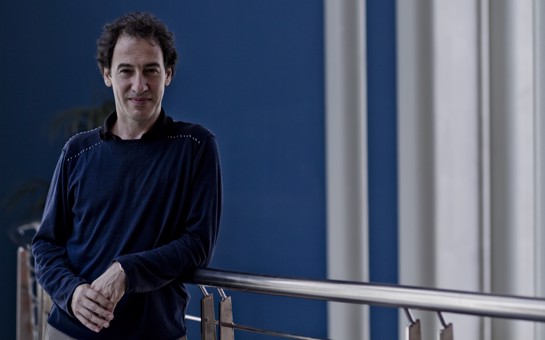- Fabián Panisello
Die Judith von Shimoda (2023)
(Opera in Two Parts)- Henry Litolff’s Verlag GmbH & Co. KG (World)
- 3S,3T,2Bar,B + SSSAATTBarBB; 1[pic,afl].1[ca].0[I:bcl.II:bcl,cbcl]+2bb-cl.1[cbn].barsx[asx,bsax]/0+f-hn.0.0+btbn.0/2perc/kbd.pf[kbd].hp/egtr[gtr].acn/str(1.0.1.1.1)
- SSSAATTBarBB
- Soprano, Soprano, Soprano, Tenor, Tenor, Tenor, Baritone, Baritone, Bass
- 1 hr 50 min
- Bertolt Brecht and Juan Lucas (libretto), Adaptation of the original text by Bertolt Brecht
Programme Note
A US consul in Japan, to whom a geisha is sent to appease the discontent American.
What at first sounds like a variation on the plot of Giacomo Puccini's Madame Butterfly is actually a play that Bertolt Brecht wrote in 1940 as an adaptation of a Japanese text. A posthumously published version from 1997 is now the basis for Argentine composer Fabián Panisello's new opera.
The original, written in 1929 by Yamamoto Yūzō, tells the story of the first American consul to arrive in Shimoda, Japan, in 1856, who finds fault with the fact that he cannot get a native servant. When his discussions about a proposed trade treaty also prove difficult, he threatens to have the town shelled. Finally, the geisha Okichi agrees to serve the consul to save her hometown. However, she is ostracized for her association with the foreigner despite being married to a Japanese man. She lapses into alcoholism and becomes a geisha again.
Brecht saw in this play the potential for "a Japanese Judith", meaning "a story of great heroism told to its end." By referring to the biblical figure of Judith, Brecht emphasized society's responsibility for Okichi's development.
More Info

- World premiere of Die Judith von Shimoda by Fabián Panisello and Juan Lucas
- 8th August 2023
- The new opera Die Judith von Shimoda composed by Fabián Panisello with a libretto by Juan Lucas receives its World Premiere at Bregenzer Festspiele on August 17.

 Located in the UK
Located in the UK
 Located in the USA
Located in the USA
 Located in Europe
Located in Europe